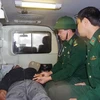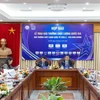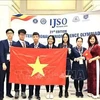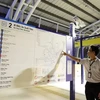A workshop was recently held in Indonesia’s Yogyakarta city to discuss how to improve living conditions for people in rural areas in ASEAN member nations through the One Village One Product (OVOP) Movement.
Jointly held by the ASEAN Secretariat and Indonesia’s Ministry of Cooperatives and Small-and Medium-sized Enterprises (SMEs), the event was also to launch “ASEAN Guidelines on Improvement of Rural Living Condition through OVOP Movement”.
Initiated in Oita prefecture of Japan in 1979, the movement became one of the successful regional economic programmes due to its approaches in transforming local products into competitive ones in local, national, as well as global markets.
It has proved to be an effective tool in improving the welfare of rural people, speeding up village economy and local income, and strengthening social solidarity by creating unique and value-added products.
The overwhelming success of Oita’s OVOP movement has motivated several ASEAN member states to adopt it into their own models under various names, such as “Satu Kampung Satu Produk” in Brunei and Malaysia, “Balik Desa” in Indonesia and “One Tambon One Product” in Cambodia and Thailand.
With the assistance from Japan, the countries decided to develop an ASEAN’s OVOP guidelines for their local and central governments to match with their socio-economic situation and administrative management structure, thus supporting SMEs’ development in their country.
The building of guidelines is one of the flagship projects of the ASEAN SME Agencies Working Group (SMEWG) under the ASEAN Strategic Action Plan for SME development in the 2010-2015 period.-VNA
Jointly held by the ASEAN Secretariat and Indonesia’s Ministry of Cooperatives and Small-and Medium-sized Enterprises (SMEs), the event was also to launch “ASEAN Guidelines on Improvement of Rural Living Condition through OVOP Movement”.
Initiated in Oita prefecture of Japan in 1979, the movement became one of the successful regional economic programmes due to its approaches in transforming local products into competitive ones in local, national, as well as global markets.
It has proved to be an effective tool in improving the welfare of rural people, speeding up village economy and local income, and strengthening social solidarity by creating unique and value-added products.
The overwhelming success of Oita’s OVOP movement has motivated several ASEAN member states to adopt it into their own models under various names, such as “Satu Kampung Satu Produk” in Brunei and Malaysia, “Balik Desa” in Indonesia and “One Tambon One Product” in Cambodia and Thailand.
With the assistance from Japan, the countries decided to develop an ASEAN’s OVOP guidelines for their local and central governments to match with their socio-economic situation and administrative management structure, thus supporting SMEs’ development in their country.
The building of guidelines is one of the flagship projects of the ASEAN SME Agencies Working Group (SMEWG) under the ASEAN Strategic Action Plan for SME development in the 2010-2015 period.-VNA



















